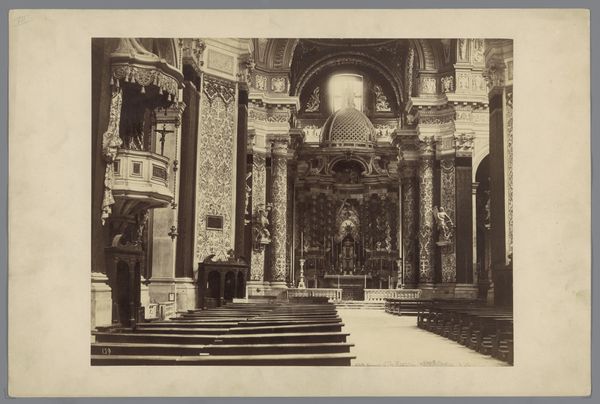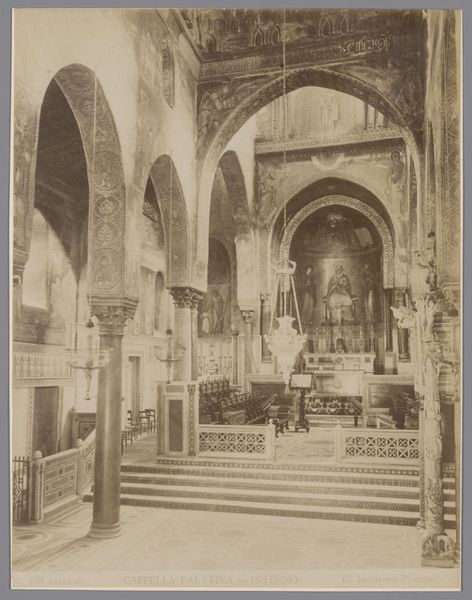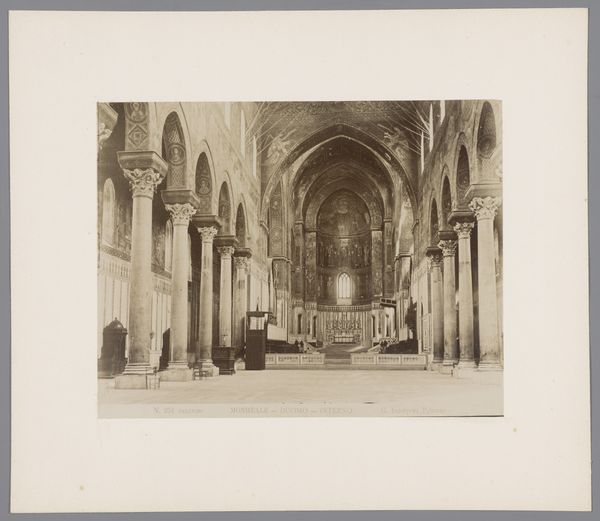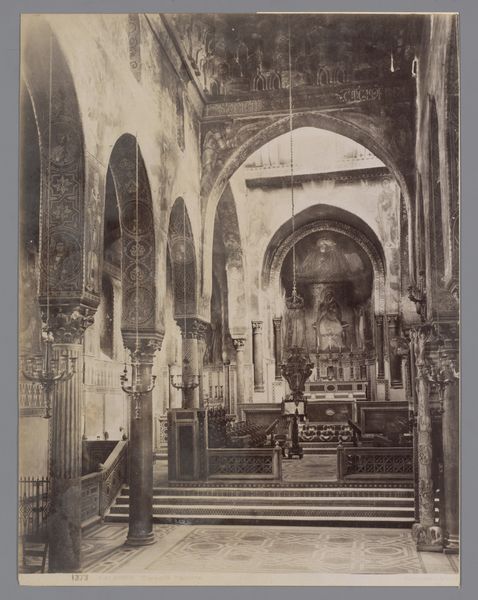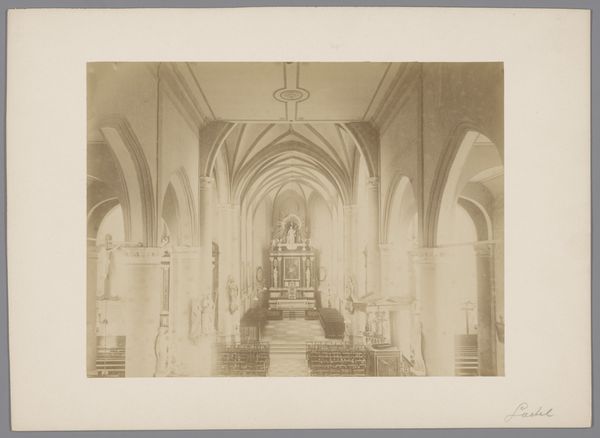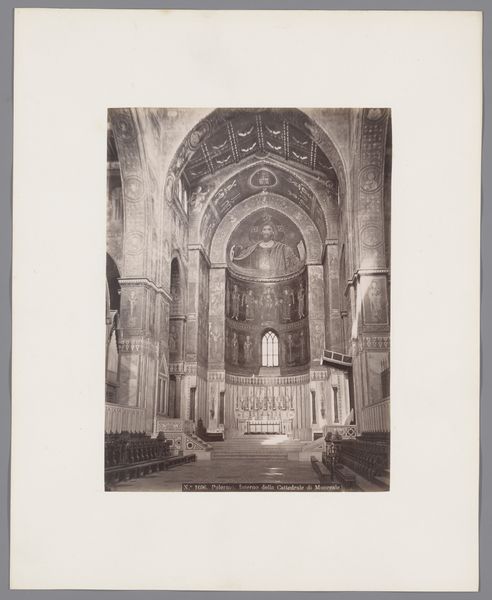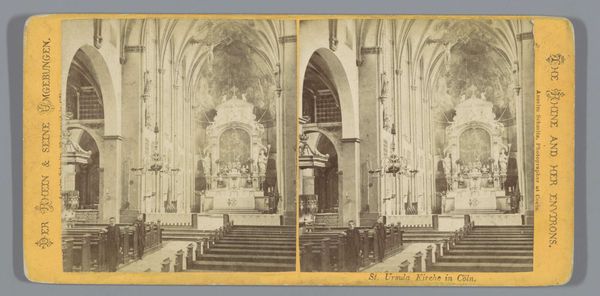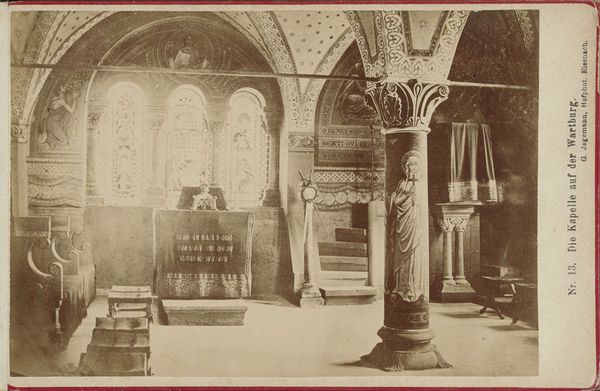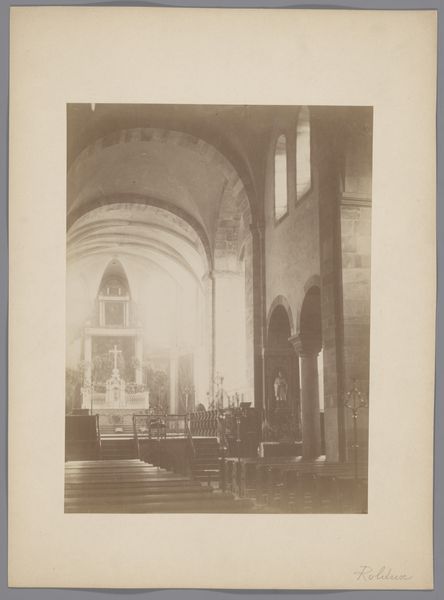
print, photography, architecture
#
16_19th-century
# print
#
photography
#
england
#
men
#
cityscape
#
architecture
Dimensions: 12.9 × 20.6 cm (image/paper); 20.2 × 27.4 cm (mount)
Copyright: Public Domain
Editor: Here we have a photographic print, likely from the latter half of the 19th century, showing the interior of St. Paul's Cathedral in London. It has a kind of ghostly quality, softened edges and an overall muted palette. What strikes you about this image? Curator: The muted tones are partly inherent to early photographic processes but also indicative of how this image engages with the visual rhetoric of its time. Consider the rise of photography in the context of debates around art and documentation. How might an image like this have been used to shape public perceptions of London and its institutions, particularly within the Empire? Editor: That's fascinating! I hadn’t thought about it as consciously shaping perceptions. I suppose I’d just seen it as a record. How do you see the architecture playing a role in that shaping? Curator: Well, look at the way the cathedral is presented – a massive, dominating structure. Its imposing presence suggests power, authority, and the continuity of the British state. But, it's not just the grandeur; consider how the people in the photograph are dwarfed by the architecture. What effect does that have on the viewer? Editor: It emphasizes the church's authority even further. And maybe hints at a sense of individual insignificance compared to such monumental institutions? Curator: Precisely. This isn’t merely a picture of a building; it's a carefully constructed image designed to communicate particular social and political messages to a growing public. I would question: how might photography enable the narrative of the 'greatness' of empire in this instance? Editor: That's given me so much to consider about how photographs can be so much more than records of reality. It really encourages me to think about how buildings themselves perform ideological work and the power dynamics embedded within them. Curator: Indeed. By critically analyzing these images, we reveal how art institutions, civic monuments, and photographs operate to reinforce social structures of power, sometimes in surprisingly subtle ways.
Comments
No comments
Be the first to comment and join the conversation on the ultimate creative platform.
